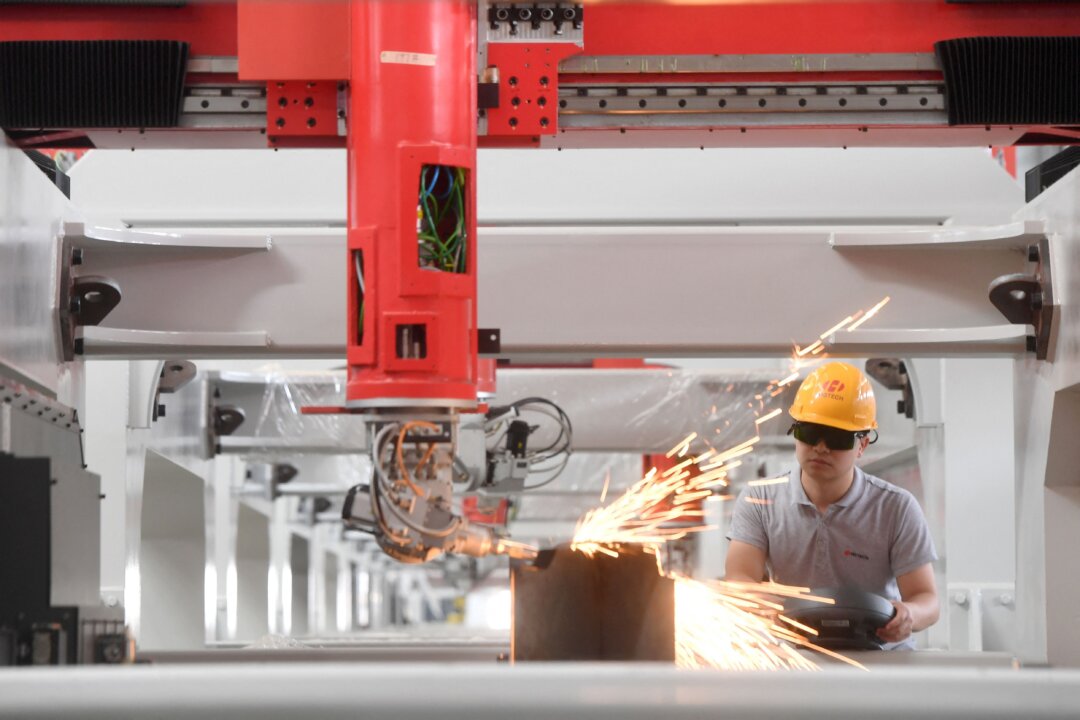‘Imagine a U.S. economy with zero manufacturing,’ warns former Trump official Nazak Nikakhtar, after China announced export control on industrial diamonds.
WASHINGTON—A former Department of Commerce official recently urged American officials and the general public to adopt an elevated sense of urgency to address the threat of U.S. supply chain dependence on communist China.
“We are running out of time. We really need to race to solve this,” Nazak Nikakhtar, former assistant secretary for Industry and Analysis during the first Trump administration, recently told EpochTV’s “American Thought Leaders,” adding that the problem had been neglected for “at least two decades.”
In her view, the issue stems from the deliberate strategic actions of the Chinese communist regime. She said that for many years, Beijing has engaged in unfair trade practices—often paying subsidiaries to flood the global market with cheap made-in-China products that others can’t compete with, thereby gaining control of an industry’s supply chain and moving on to undercut the next one.
Compared to China’s dominance in the production of steel, batteries, solar cells, and personal protective equipment—all of which the American public is aware of due to the tariffs imposed during the Trump and Biden administrations—China’s dominance in lab-grown industrial diamond production is equally critical yet lesser known.
These diamonds are essential for cutting tools—crucial for building, drilling, and manufacturing. The affected industries range from cars to aerospace and defense. According to the U.S. Geological Survey (USGS), China produces 95 percent of the world’s synthetic diamonds, and U.S. dependence on imports has fluctuated between 80 and 95 percent since 2018.
On Dec. 3, China’s ruling communist party banned the export of industrial diamonds to the United States, along with gallium, germanium, and antimony—materials critical for making semiconductors. The decision was announced a day after the United States added advanced semiconductor manufacturing equipment and software to its export controls to curb Beijing’s access to these critical elements for developing artificial intelligence.Also referred to as “super hard materials,” industrial diamonds are part of “Made in China 2025,” the Chinese communist regime’s ten-year industrial policy aimed at achieving dominance in advanced manufacturing worldwide.
Since 2012, the regime has classified the manufacturing of diamonds and related equipment as “strategic new sectors.” Central and local authorities developed policies that promoted these businesses and provided subsidies.
Although the specific amounts are unclear, sporadic Chinese media reports have revealed annual subsidies of between 10 million yuan ($1.3 million) and 50 million yuan ($6.8 million) per company.
“Imagine a U.S. economy with zero manufacturing,” Nikakhtar warned.
USGS data indicate that the nation lacks a stockpile of industrial diamonds, and in 2023, the estimated domestic production of the diamonds met only 16 percent of the total volume needed in the United States.
“It’s just time to wake up. China has made clear that it is moving in this direction. We’ve got to take them at their word,” she said. “China has already shown us through its recent export controls that it means business, and it really has the ability to hurt the U.S. economy.”
In the past eight decades, Congress has delegated extensive authority to the president to set tariff rates. A few laws allow America’s chief executive to use tariffs to set foreign policy and protect national security interests.
During Nikakhtar’s tenure with the Commerce Department’s Bureau of Industry and Analysis, President Donald Trump invoked Section 232 of the Trade Expansion Act of 1962 in March 2018 to impose a 25 percent tariff on steel and a 10 percent levy on aluminum from all countries except Canada and Mexico.
In October 2021, President Joe Biden reached an agreement with the European Union and the United Kingdom and replaced the tariffs with quotas in return for lifting the retaliatory tariffs on U.S. exports.
Trump also used Section 301 of the Trade Act of 1974 to impose tariffs on Chinese imports worth approximately $300 billion annually. The Biden administration kept all the duties and added more last year, following a review conducted every four years.
As Trump begins his second term, Nikakhtar stated that the new administration is “very confident in how they’ve utilized the novel laws in the past” and will continue leveraging available legal mechanisms to apply tariffs to correct market distortions caused by unfair trade practices.

